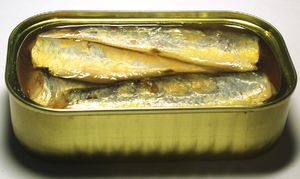My 6th Great Grandfather was Louis Pinard.
1 He was born July 12, 1634 in La Rochelle, FranceHe was the son of Jean Pinard and Marguerite Gaignier of Notre Dame de La Rochelle.
Louis came to Canada about 1648. He was a surgeon. He returned to France with the surgeon Francois Gendron to complete his surgical studies August 23, 1650. This made him a Master Surgeon upon his return six years later. He made use of his skills immediately working in the garrison at Trois Rivieres.
In 1666 Jacques Dubois was employed by him as a surgeon’s aid. Louis Pinard is said to have taken part in the expedition to Hudson Bay in 1685 along with the surgeon Jacques Meneux dit Châteauneuf. Around 1690 he became surgeon-major of the town of Trois-Rivières. His son Claude was also to become a surgeon and undoubtedly began his studies under his father’s direction; he did his apprenticeship, however, under Jean Demosny at Quebec. In 1692 Pinard was the agent of Claude Deshaies-Gendron, and distributed in the region around Trois-Rivières “the remedies which M. Gendron sent to Canada for charity.”
On 11 June 1657 Louis Pinard had signed before the notary Séverin Ameau* a contract of marriage with Marie Madeleine Hertel, daughter of Jacques Hertel and Marie Marguerie. On 30 Nov. 1680 at Champlain he took as his second wife MarieUrsule Pépin. Each of his wives bore him six children.( I am still searching for the documents of 8 of the 12 children he fathered. )
Pinard does not seem to have had a very peaceful career: we find him engaged in legal disputes over money matters with a great number of citizens of Trois-Rivières and Cap-de-la-Madeleine. In particular he had quarrels with Michael Leneuf Du Hérisson. Moreover he was in rivalry with the surgeon Michel Gamelain, whose competition be feared and who later became father-in-law to his son, the surgeon Claude Pinard. Nevertheless Louis Pinard seems to have been held in esteem, since he was for a long time one of the settlers’ syndics, a churchwarden, and procurator of the church.
In 1670 he settled down on his seigneury of L’Arbre-à-la-Croix at Champlain (seigneury of La Pinardière). There he engaged in agriculture and the fur trade. Later we find him at Batiscan, where he was buried 12 Jan. 1695.
My line descends from two of his sons with Marie Ursule Pepin, Antoine Pinard and Guillaume Pinard dit Beauchemin. They were my 5th. Great Grandfathers. Oh but there is more. Francoise Pinard was my 8th Great Grandmother. She was Louis' daughter with his first wife Marie Madeleine Hertel. Now how does my 6th Great Grandfather sire my 8th Great Grandmother you ask? Well Francoise was 20 years older then her brother Antoine and 27 years older than Guillaume. You can squeeze in a couple more generations when you are married at 18 and your first child is born the same year as your brother. Technically this makes her my 8th Great Grandmother, and my 5th great Aunt. Oh my head hurts.
Now you know why genealogy can be so complicated. This is why you must check and double check your facts and your sources to be sure. There are a lot of pedigree lines to follow when you go back that far. Did you know that for every generation you go back the ammount of grandparents you have doubles? You have 4 grandparents right. Now each of these people have 2 parents so that makes 8 great grandparents for you. Those 8 each have 2 parents so now we are at 16 great great grandparents for you. And so on, and so on.
Dictionary Of Canadian Biography Online, Library and Archives Canada onlineAJTR, Greffe de Séverin Ameau, 11 juin 1657. JJ (Laverdière et Casgrain), 143. Jug. et délib. Ahern, Notes pour l’histoire de la médecine, 441–44. Raymond Douville, “Chirurgiens, barbiers-chirurgiens et charlatans de la région trifluvienne sous le régime français,” Cahiers des Dix, XV (1950), 118–21.
 (Jacques Baron)
(Jacques Baron) (Marguerite Benoist)
(Marguerite Benoist) (Marie Renee Lefebvre)
(Marie Renee Lefebvre) (Rene Lefebvre)
(Rene Lefebvre) (Virginie Pinard)
(Virginie Pinard)


























![Reblog this post [with Zemanta]](http://img.zemanta.com/reblog_e.png?x-id=60677af8-51f1-44f2-9c37-5c910f804f75)


![Reblog this post [with Zemanta]](http://img.zemanta.com/reblog_e.png?x-id=662f7d78-a754-49f8-af3d-43cda67ba0e8)


![Reblog this post [with Zemanta]](http://img.zemanta.com/reblog_e.png?x-id=22dfe9fb-6453-40a2-bce8-1f4c4533da94)




